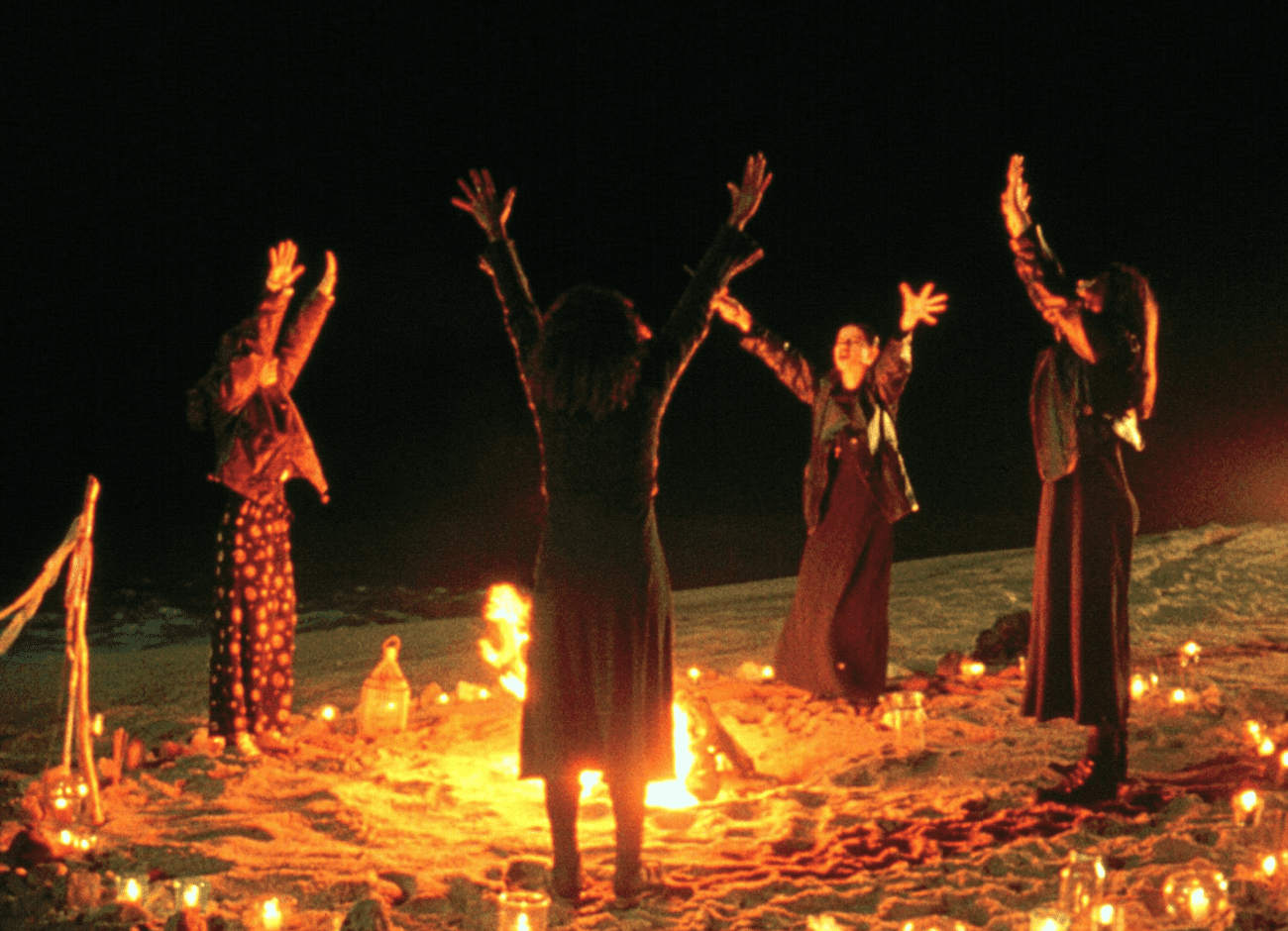The Craft: Legacy, written and directed by Zoe Lister-Jones, a continuation of the 1996, The Craft, does not live up to the expectations of the original—or rather, it fails to achieve the nostalgic grunge angst devout cult fans had hoped for. I confess that this is the reason why I enjoyed it so much.
The OG Craft featured a cast of four 20-30-year-olds playing teenagers; all of whom are white, except one: Rochelle (Rachel True), a Black witch whose hexes rage revenge against her racist classmates.

Although, it could be said reparations were made, by casting only one person of color to show “diversity,” the film lacked inclusivity and perpetuated tokenization and isolation for not only the actor herself but also Black teen girls. Misogyny in the filming industry is further explored in the documentary Horror Noire: A History of Black Horror, where True states that her role often entailed supporting white female leads, “‘Are you OK?’ is going to be on my tombstone, with an etching of me looking concerned.” As a Black viewer myself, this was not the film I wanted mirrored.
Legacy opens with 16-year-old Lily (Cailee Spaeny) and her mother moving to a new town with Adam, author of self-help books for men, and his three sons Isaiah, Jacob, and Abe. With this groundwork, the writers pave for a twisted Christian mythological, dark gender-swapped Cinderella.
As the new “weird” kid, Lily is bullied and ridiculed when she gets her period for the first time during class. The thick, grisly blood dripping down the back of her chair could be seen as overdone and gratuitous but I saw it as an opportunity to spotlight one of the film’s most important themes: power; who lacks power and who abuses it?
It’s a powerful scene where immediately, three girls offer Lily support, comfort, gym shorts, and an invitation to join their coven. They introduce themselves, stating that each witch corresponds to an element: (a moment that feels like a nod to Hex Girls that I’m very much here for) Tabby (Lovie Simon), whose element is fire, a direct connection to the Black radical movement, Frankie (Gideon Adlon), an obvious air sign with lesbian energy, Lourdes (Zoey Luna), earth, grounded in her gender, proclaims, “trans girls have their own magic,” and Lily, water, who becomes their “fourth” in their circle.
Those who’ve seen the first Craft will remember that this does not end well for new girl Sarah Biley. So, I was pleasantly surprised when the film shifted from centering cis-hetero white girlhood to a critical perspective about toxic masculinity and queerplatonic friendship.
However, half of this film is dedicated to the girls building trust and intimate relationships with each other. Whether it’s literally lifting each other up as light as a feather, reading each other’s auras, casting makeup spells, or enchanting a boy to be a raging feminist in a very symbolic way (emission vigils are a real thing), the characters protect each other from harm and form a safe space for those who find it dangerous to be their true selves.
While criticism has been circling on misandry, Timmy’s (Nicolas Gailtzine) confession of his bisexuality makes it clear that the story is meant to portray how the idea of what is considered ‘manliness’ can transmogrify into violence and homophobia. The characters who exhibit aggression and supremacy toward those who do not fit within the gendered expectations of society, not only belittling them but also causing tremendous violence and psychological harm were the darkest moments in the film.
Should we really be doing this?
If there’s one scene worth highlighting the threat of what most marginalized teens face today it’s when Frankie, concerned about repercussions says, “Should we really be doing this? Hexing is serious” and Tabby responds, “So is harassment.”
Fans may have fallen in love with The Craft’s predecessor, but Legacy is a much-needed return that inspires a new generation of teen witches with characters reflecting voices that have been disregarded, feeling almost like redemption for what was missing in the original. That’s the power of sequels: to transform a made image into something to reinvent and reclaim.




Thank you for the review. I know what to expect in this sequel. Good to know you enjoyed it.